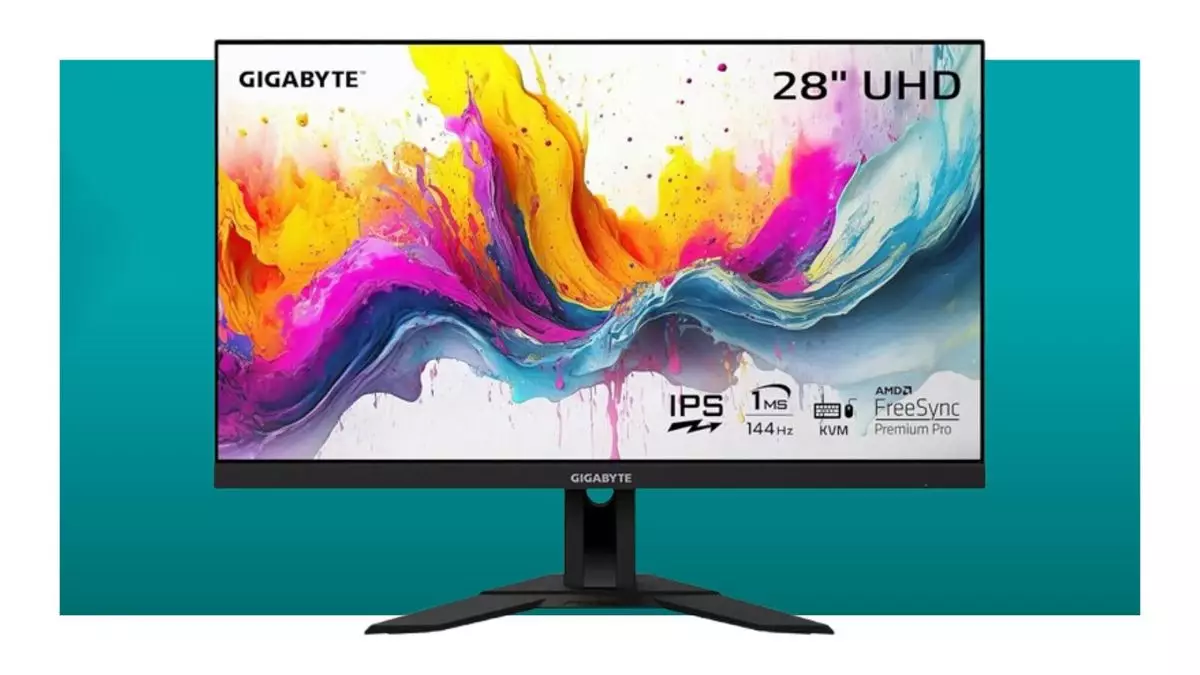In the landscape of gaming monitors, the Gigabyte M28U has carved out a niche for itself as the go-to choice for budget-conscious gamers seeking high-quality 4K resolution. As the competition has increased, the M28U’s position has solidified, particularly with its recent price drop, making it a hot topic among those looking to maximize their gaming experience without breaking the bank. This article aims to critically analyze the strengths and weaknesses of the Gigabyte M28U and what it offers to the gamer on a budget.
The competitive pricing of the Gigabyte M28U is a major factor in its popularity. Priced at approximately $350, following a substantial reduction from its original MSRP, this monitor offers an enticing proposition for gamers. Compared to similar models on the market, the M28U stands out by providing 4K resolution paired with a 144 Hz refresh rate at a fraction of the cost of its competitors. This extraordinary value does not come without its trade-offs, and potential buyers should weigh the benefits carefully against some of its shortcomings.
Despite its commendable specifications, the M28U isn’t without its flaws. One notable issue is its overdrive mode, which introduces artifacts that can detract from the overall gaming experience. Artifacts manifest as visual disturbances that can disrupt immersion, especially in fast-paced gaming scenarios. Furthermore, while many high-performance monitors are designed with exceptional build quality in mind, the M28U’s stand leaves much to be desired. Stability issues can arise, particularly during intense gaming sessions, thus reducing overall satisfaction.
As for the display itself, the 4K picture quality is undeniably impressive for its price. The vibrant colors and sharp images are more than adequate for casual gaming and even some competitive experiences. However, the brightness level is somewhat underwhelming at an average of 300 cd/m^2, which may not suffice in well-lit environments. Users desiring top-tier HDR performance may find themselves disappointed, as the M28U does not elevate its HDR capabilities beyond what is mediocre.
The design elements of the Gigabyte M28U are both functional and limited. At 28 inches, the monitor strikes a balance between being compact enough for smaller desk spaces while still providing a quality viewing experience. For gamers with space constraints, this size may be ideal. Additionally, the array of connectivity options—including USB Type-C, USB 3.0 ports, HDMI 2.1, and DisplayPort—enhances its appeal as a versatile choice for tech setups. A notable feature is the KVM switch, allowing users to toggle effortlessly between devices, ensuring that the monitor serves both gaming PCs and consoles without interruption.
However, even with its generous connectivity options, the built-in speakers are a point of contention. While they serve a purpose, the audio quality leaves much to be desired—though this can be remedied by utilizing the 3.5mm audio jack for external speakers or headsets. This compromise is common in budget models, yet it emphasizes that buyers may need to invest additionally in audio solutions to augment their gaming experience.
The Gigabyte M28U undoubtedly holds the crown as a leading budget 4K gaming monitor, particularly given its forked pricing trajectory that has made it even more accessible to a broader audience. While there are performance and design drawbacks, such as mediocre HDR capabilities and an average stand, the overall quality of the display and its competitive specifications make it a wise investment for gamers who want to experience 4K without a hefty price tag.
As new graphics cards enter the market, the affordability of the M28U can also alleviate some of the financial pressures associated with upgrades, making it an optimal choice for gamers looking to enhance their visual experience. While it may not be without its imperfections, the Gigabyte M28U shines as a budget-friendly option that delivers considerable bang for your buck in the realm of 4K gaming monitors.

